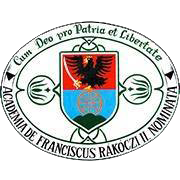Please use this identifier to cite or link to this item:
https://dspace.kmf.uz.ua/jspui/handle/123456789/104Full metadata record
| DC Field | Value | Language |
|---|---|---|
| dc.contributor.author | Huszti Ilona | hu |
| dc.contributor.author | Густі Ілона | uk |
| dc.date.accessioned | 2020-09-22T12:49:00Z | - |
| dc.date.available | 2020-09-22T12:49:00Z | - |
| dc.date.issued | 2004 | - |
| dc.identifier.citation | In Gabóda Béla és Lipcsei Imre (szerk.): Közös értékeink. Tanulmánykötet. Ungvár, PoliPrint Kft., 2004. pp. 70-79. | en |
| dc.identifier.isbn | 966-7966-19-4 | - |
| dc.identifier.uri | http://dspace.kmf.uz.ua:8080/jspui/handle/123456789/104 | - |
| dc.description | https://opac3.brff.monguz.hu:443/hu/record/-/record/91668 | en |
| dc.description.abstract | Abstract. It is generally assumed that age is a factor that has an impact on learning a foreign or second language. The problem of age in foreign or second language acquisition is quite controversial: researchers have not yet arrived at a consensus. The main question, which causes a dilemma among researchers, is whether adults or children are better learners of a foreign or second language. There is no clear-cut answer to this question, though a great number of studies have been conducted to investigate the effect of age on foreign or second language learning and what role it plays in the process of foreign or second language acquisition (Johnson & Newport, 1989; Ehrman & Oxford, 1990; Johnson, 1992; Ioup et al., 1994; Bongaerts et al., 1997; DeKeyser, 2000; Nikolov, 2000b; Ottó, 2000). In recent years, due to different factors, e.g. parents’ belief in children’s early start with regard to foreign language learning (Nunan, 1999), foreign language teaching to young learners has been introduced to the curriculum in countries like Ukraine, Italy or Slovakia. Two informative papers were published about the Slovakian and Italian experience with teaching English to young learners in 2000 (Farkasová & Biskupicová, 2000; Hill, 2000). One of them (Farkasová & Biskupicová, 2000), report on “an innovative project involving first foreign language from the very beginning of school” (p. 121), while the other (Hill, 2000) provides insights into the problems and success of introducing foreign language teaching to the elementary school curriculum in Italy. Thus, current trends tend to give way to ‘the younger = the better’ assumption, but whether the younger is really the better is another matter. The present paper tries to give empirical evidence for the highly debated hypothesis of the critical period in foreign or second language acquisition and give explanations for it from a special perspective, the neurological one. | en |
| dc.description.abstract | Absztrakt. Általánosan elfogadott tény, hogy az idegen nyelvet tanulók életkora fontos és meghatározó szerepet játszik az idegen nyelvek elsajátításának folyamatában. Az életkor idegennyelv-elsajátításban játszott szerepe ellentmondásos, mivel a témát kutatók körében nincs megegyezés ezzel kapcsolatban. A legfontosabb kérdés az, vajon a gyermekek vagy a felnőttek számítanak jobb nyelvtanulóknak. Erre a kérdésre nincs egyértelmű válsz, bár a témával kapcsolatos létező szakirodalom nagynak mondható. A jelen cikk arra tesz kísérletet, hogy empirikus adatokat sorakoztasson fel és neurológiai szempontból magyarázza a sokat vitatott kritikus periódus hipotézisét. Ami a kritikus hipotézis neurobiológiai alapjait illeti, a szakirodalomból kitűnik, hogy nincs egységes vélemény a kutatók körében, ezért ezen a területen további empirikus kutatásokra van szükség. | hu |
| dc.language.iso | en | en |
| dc.publisher | PoliPrint Kft. | en |
| dc.rights | Attribution-NonCommercial-NoDerivs 3.0 United States | * |
| dc.rights.uri | http://creativecommons.org/licenses/by-nc-nd/3.0/us/ | * |
| dc.subject | Critical period | en |
| dc.subject | Neurological Perspective | en |
| dc.title | The Critical Period Looked at from the Neurological Perspective | en |
| dc.type | dc.type.article | en |
| Appears in Collections: | Huszti Ilona | |
Files in This Item:
| File | Description | Size | Format | |
|---|---|---|---|---|
| Huszti_I_The_critical_period_2004.pdf | In Gabóda Béla és Lipcsei Imre (szerk.): Közös értékeink. Tanulmánykötet. Ungvár, PoliPrint Kft., 2004. pp. 70-79. | 10.3 MB | Adobe PDF | View/Open |
This item is licensed under a Creative Commons License





